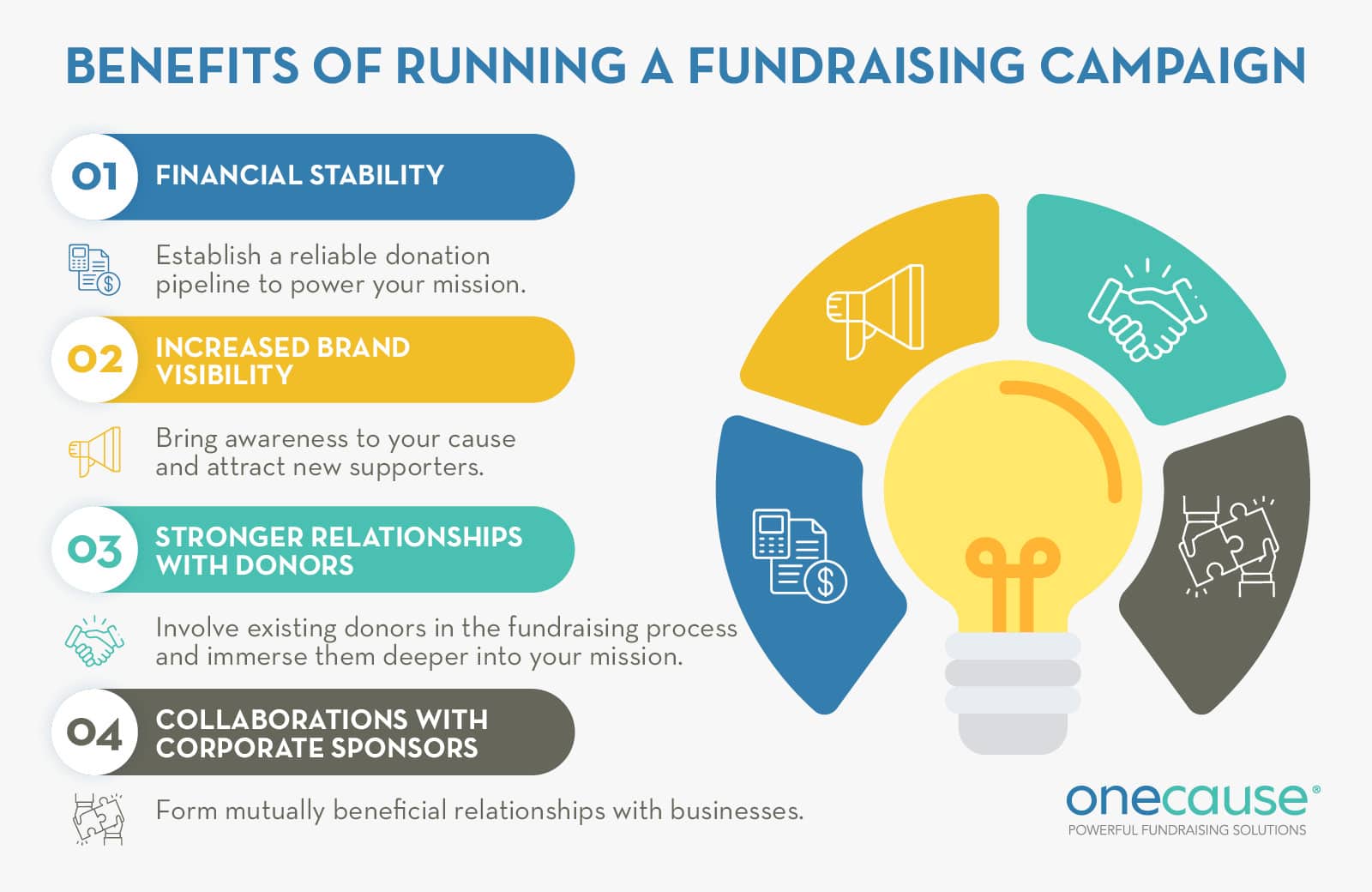Nonprofit Marketing: Strategies to Raise Understanding and Drive Donations
Nonprofit Marketing: Strategies to Raise Understanding and Drive Donations
Blog Article
The Function of Community Engagement in Nonprofit Fundraising: Structure Lasting Relationships for Lasting Support
Area involvement is significantly acknowledged as a vital part of effective nonprofit fundraising. By cultivating genuine connections with regional stakeholders, organizations can grow trust and commitment, which are essential for lasting support. However, the approaches and methods employed to involve areas differ commonly, increasing essential inquiries regarding performance and effect. What are the very best practices for growing these important connections, and exactly how can nonprofits measure their success in this field? Understanding these dynamics could significantly influence the future of fundraising efforts and the general mission of not-for-profit organizations.
Understanding Area Engagement
Area engagement is an important component of effective not-for-profit fundraising initiatives. Nonprofits have to recognize vital stakeholders-- such as area participants, local companies, and other organizations-- to create reliable engagement approaches.
Effective community interaction is asserted on energetic listening and responsiveness to the requirements and interests of the area. This procedure involves soliciting responses, recognizing area dynamics, and making certain that the organization's goal lines up with local top priorities. Involving the neighborhood can take various kinds, consisting of public conferences, volunteer possibilities, and partnership campaigns, each developed to urge participation and investment in the company's objectives.
Moreover, neighborhood engagement must be approached as a continuous dialogue as opposed to a single initiative. By fostering a comprehensive environment where community voices are heard and valued, nonprofits can build a solid foundation for future fundraising ventures. Eventually, a deep understanding of community engagement equips companies to create genuine links that boost their overall efficiency and sustainability.
Advantages of Solid Relationships
Solid connections developed via community interaction return numerous benefits for nonprofit fundraising initiatives. Firstly, these relationships foster trust and integrity, necessary parts in encouraging contributors to contribute. When possible supporters see a nonprofit actively involved in their community, they are most likely to believe in its objective and effect.

Additionally, these relationships help with reliable interaction. Nonprofits can leverage their connections to share tales of influence, updates, and needs, guaranteeing that fans remain enlightened and involved. This open line of communication not only reinforces bonds however also encourages referral promo, broadening the nonprofit's reach.
Last but not least, strong area ties can attract new partners and sponsors. Services and people are much more likely to align with organizations that demonstrate purposeful area participation, providing additional resources and support that can significantly boost fundraising capacities. Therefore, growing robust connections through area engagement is essential to a not-for-profit's long-term fundraising success.
Strategies for Efficient Involvement
How can nonprofits successfully engage their communities to boost fundraising initiatives? Developing targeted strategies is essential for promoting meaningful links. Initially, leveraging social media sites platforms makes it possible for companies to share their objective dynamically and interactively, getting to a broader target market. Normal updates, engaging content, and calls-to-action can galvanize neighborhood interest and involvement.
2nd, organizing community occasions, such as workshops, volunteer possibilities, or fundraising drives, promotes in person interaction, allowing nonprofits to showcase their influence and initiatives. These events not only elevate funds yet also grow connections and enable neighborhood participants to involve straight with the reason.
Third, applying tailored interaction approaches can enhance engagement. Tailoring messages to certain benefactor sections based on rate of interests and past contributions promotes a sense of belonging and financial investment in the organization's mission.
Finally, producing partnerships with local organizations and community over here leaders can intensify outreach initiatives. Collaborative efforts can boost presence and integrity, demonstrating a cumulative commitment to the area's wellness. By incorporating these methods, nonprofits can construct long-term connections that enhance fundraising initiatives and drive lasting support.
Determining Interaction Success
While involving the neighborhood is vital for successful not-for-profit fundraising, measuring the performance of these interaction efforts is just as important. Establishing clear metrics allows companies to analyze exactly how well they are attaching with their target market and attaining their fundraising goals. Secret efficiency indicators (KPIs) such as benefactor retention prices, volunteer involvement degrees, and engagement on social media platforms supply you could look here concrete information for evaluation.

Frequently examining these metrics allows companies to pivot their strategies when required, making certain that area involvement continues to be aligned with their general goal. Moreover, sharing these outcomes with stakeholders cultivates openness and develops depend on, urging further neighborhood participation. Inevitably, a durable measurement framework not just educates future fundraising campaigns however additionally enhances the relationship in between the nonprofit and its supporters, laying the foundation for sustainable success.
Situation Research Studies in Neighborhood Impact
Various case research studies highlight the extensive influence that community engagement can carry nonprofit fundraising success. One significant instance is the "Food for Idea" initiative, where anchor a regional food financial institution partnered with businesses and schools to host neighborhood dinners. These events not just increased funds however additionally promoted a feeling of belonging among participants, substantially boosting contributor retention rates.
One more engaging situation is the "Eco-friendly Spaces Job," which entailed local residents in the revitalization of metropolitan parks. This initiative not only gathered financial support from local companies however additionally cultivated a volunteer base that added to ongoing upkeep and shows. The sense of possession and pride amongst area members translated into continual payments.
In the realm of arts, the "Art for All" project efficiently involved local musicians and customers to develop joint art setups, bring about increased presence and donations for a regional arts nonprofit.
These instances highlight that when nonprofits focus on community involvement, they can develop long-term connections that improve fundraising initiatives, making sure lasting assistance and promoting a vibrant community society. Such instances show that area interaction is not merely a strategy yet an essential pillar of nonprofit success.
Conclusion
In verdict, neighborhood engagement is essential to the success of not-for-profit fundraising initiatives. Inevitably, a robust foundation of area support not only enhances fundraising potential yet also cultivates a society of partnership, necessary for attaining long-lasting organizational objectives and maintaining meaningful impact. fundraising consultant.
Nonprofits need to determine vital stakeholders-- such as community members, neighborhood businesses, and other organizations-- to create reliable interaction approaches.

In conclusion, neighborhood engagement is indispensable to the success of nonprofit fundraising efforts.
Report this page